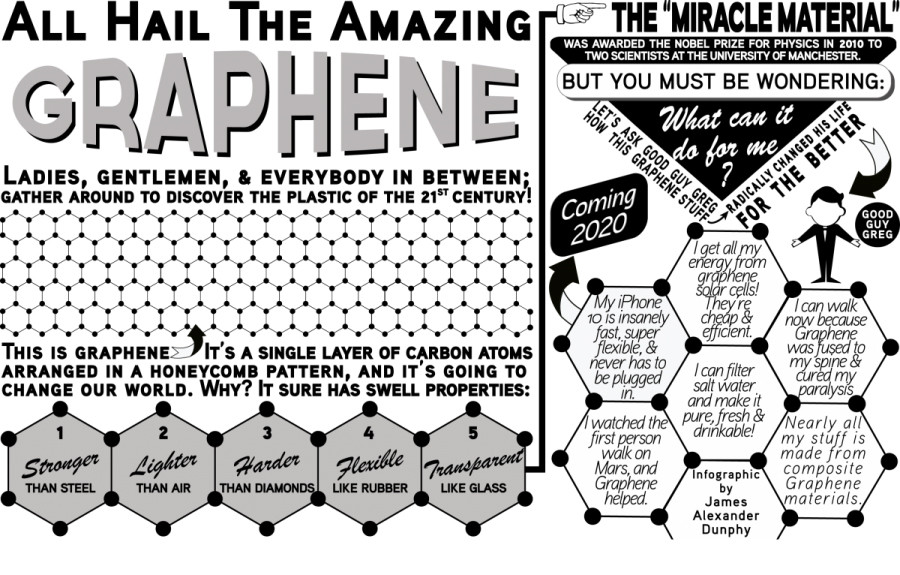Graphene 101
A Look at the Potential Future Base to Everything Strong, Light and More Efficient
Like many of the great scientific breakthroughs that came before it, the discovery of graphene happened almost by accident.
One day at the University of Manchester, professors Andrei Geim and Konstantin Novoselov were fooling around with carbon graphite flakes, when suddenly a few graphite crumbs got stuck on a piece of Scotch tape. They started peeling the tape back and forth over and over again until the graphite had become just a few atoms thick.
They transferred the atoms to a silicon wafer, popped it under a giant microscope and discovered the “miracle material” that just might change the world.
The Nobel Prize for Physics in 2010 was awarded to the pair; but let’s be honest, the real star of this discovery was the genius piece of Scotch tape.
So what is graphene? A single layer of carbon atoms arranged in a honeycomb pattern. It seems pretty basic, but the simplicity of graphene is what makes it so extraordinary. It’s essentially a two-dimensional material that is lighter than air, stronger than steel, harder than diamonds, more conductive than copper, flexible and transparent. Try to think of graphene like a scaffold. By layering sheets of graphene between layers of existing materials like metals, entirely new composite materials with different properties could be created.
Graphene is going to make the new era of wearable computing a reality. Imagine an iPhone 10 made with graphene. It would be wicked fast, thin like paper, super flexible and transparent. You could wrap it around your wrist, roll it up and stick it in your pocket, or even stretch it to make the screen bigger. The battery would charge in seconds because the graphene sheets between the lithium ion layers in the battery would allow for the electrical charge to travel faster.
Graphene will revolutionize our ability to harness the power of the sun by greatly increasing the capacity of solar cells. Without getting into the actual mechanics of solar energy, a solar cell made with graphene—as opposed to traditional silicon—would be hundreds of thousands of times smaller, lighter, cheaper and more efficient. With a graphene solar cell, we’d never have to suck dirty liquid out of the ground and then torch it for power ever again!
The amount of potential applications for graphene is so vast, scientists are dubbing it the next plastic. Look around at your surroundings, how many things made from plastic do you see? In 15 years time, that will be graphene. We’ll see it in our planes, trains and automobiles, which will be stronger, lighter and more efficient. We’ll see it in our windows, which will be powering our homes while simultaneously displaying the weather and news headlines. It will cure ailments; from making sensors that detect diseases on contact, to fixing paralysis by connecting undamaged neurons along a damaged spinal column.
As if it couldn’t do enough already, it’s also curing the Earth. Since a sheet of graphene is basically the world’s finest mesh, imagine dragging it through water. Scientists have theorized that a large enough sheet of graphene could sift things at the molecular level. Is your water salty and/or radioactive? Pour it through some graphene and you’ve got a glass of fresh, pure, totally drinkable water.
If you aren’t excited about graphene yet, you will be when it starts revolutionizing every aspect of your life. Perhaps, and I’m only guessing here, one day we’ll be able to craft graphene coated hearts—immune to breaks and light as a feather.


_600_832_s.png)

1_600_375_90_s_c1.jpg)
_600_375_s_c1.png)
_600_375_90_s_c1.jpg)
